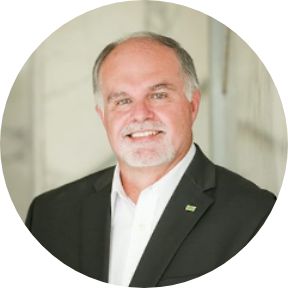FEATURE:
The Real Challenge in Challenge 2050
In 2015, the Toyota Environmental Challenge 2050 (Challenge 2050) was announced. Challenge 2050 has six challenges that seek to go beyond eliminating environmental impacts to creating net positive impacts on the planet and society:
- Three on reducing the CO2 emissions that cause climate change.
- One on conserving water.
- One on improving material flow.
- And one on protecting biodiversity.
These six challenges are the most demanding and most inspiring environmental commitments Toyota has ever made.
On the surface, the challenges sound simple enough. But when you look at the challenges more closely, you’ll see how complicated they really are. Our success depends on our team members and partners, and working together to address the complexities of how we will actually achieve these goals. We look forward to working with all of these stakeholders, learning from them and sharing what we learn with society.
We started by organizing the six global challenges into our four North American focus areas of Carbon, Water, Materials and Biodiversity – you can see that alignment throughout our North American Environmental Report. Then we started digging into what these challenges actually mean for the way we operate.
Take Challenge 2, which calls for eliminating CO2 emissions from supplier and dealer activities. A large segment of our supply chain is logistics, where we need to replace diesel as the fuel of choice. Our Project Portal hydrogen fuel cell electric heavy-duty truck is a step in that direction. There are already 10 of these trucks that will soon be operating at the Port of Long Beach. Some of our third-party logistics carriers have begun the transition away from diesel, but the transportation sector still has a lot of trucks and a long way to go. Moving away from diesel is a transformation that can’t happen overnight.
Then there’s the task of eliminating CO2 emissions from our facilities. These emissions are the result of using about 4 million megawatt-hours per year of natural gas and electricity at our sites. To meet this challenge, we have to find ways to stop burning natural gas to heat our buildings. We need to come up with unique and creative ways of generating and using thermal energy. There are a few small-scale options out there, but we need options that will work at all our manufacturing facilities and at other locations.
We also need to find ways to generate or purchase 100 percent of our electricity from renewable sources. Here, I’m happy to share some good news. By entering into virtual power purchase agreements, we are contracting with renewable energy providers to generate wind and solar power and put it on the grid. By funding the generation of renewable electricity, Toyota expects to offset CO2 emissions from our facilities in North America by as much as 40 percent. By the time these projects start coming online in 2021, we will have found a way to scale up our efforts to the point where we’re making positive change.
Then we have Challenges 4, 5 and 6. These three are still being refined because the issues they address – water, materials and biodiversity – are more dependent on regional circumstances. Take Challenge 4 as an example. Water availability and quality issues differ in each region of the world, so we must come up with a water stewardship strategy that suits the North American region. For example, some of our sites in California, Texas and Mexico are in areas where the overall water risk is considered high. We are looking at ways not only to use less water but also to protect water resources to help ensure a sustainable water supply.
Nothing about Challenge 2050 is simple, except the reasoning behind it. Toyota considers sustainable development to be a key driver of the company’s global strategy. We know that our future – our health and well-being – depends on clean air, clean water and diversity in nature to provide us with food security, medicines and other ecosystem services.
Challenge 2050 will not be achieved through continuous improvement alone. It will take new ideas, new technology and new partnerships. It will take creativity and thinking outside the box. It will take working with committed partners who will help us find success along the way.
Step by step, we'll keep making progress toward achieving zero CO2 emissions and a net positive environmental impact at a global level. I look forward to sharing future examples of how Toyota creates net positive impact here in North America.
In the meantime, we'll continue doing our part to make a better planet.

Kevin Butt
Senior Director, Environmental Sustainability
Toyota Motor North America, Inc.




